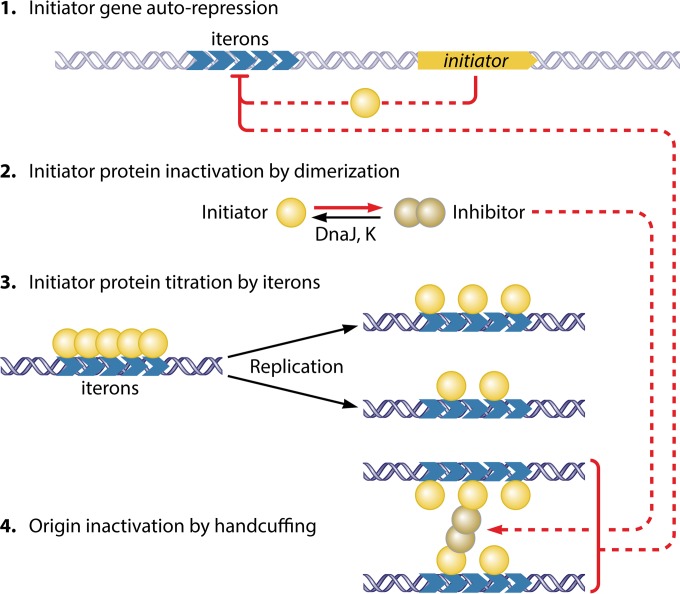FIG 4.
Control of replication in iteron-carrying plasmid P1. The controls target the initiator as well as the iterons. The initiator is controlled negatively by three mechanisms: repression of transcription, inactivation by dimerization, and limiting availability by titration (steps 1 to 3). In P1, initiator binding to the origin also causes repression of the initiator promoter (autorepression), with the promoter being buried within the iteron array. The handcuffing reaction described below (step 4) possibly strengthens transcriptional repression. The initiator dimerizes, but the dimers do not bind iterons. Upon initiation, iteron numbers increase, which titrate the limiting amount of monomers, preventing the saturation of the iteron arrays, and without saturation, origins cannot be activated. Moreover, the nascent origins are paired via initiator bridges (handcuffing). The dimers, although inactive in iteron binding, participate in handcuffing and thereby serve as inhibitors. The dimers and the iterons are the two inhibitors in this system, and they cooperate in shutting down origins following replication initiation. Both of their concentrations are reduced upon cell growth. Moreover, the chaperones (DnaJ and DnaK) actively convert dimers to monomers. The increase in levels of monomers over dimers reduces handcuffing and helps to saturate the origin with monomers, allowing replication initiation. The inhibitory interactions are in red. For clarity, the iterons outside the origin (incA iterons) are not shown. They serve inhibitory roles only by increasing titration and handcuffing with the origin iterons. (Adapted from reference 5 with permission of the publisher.)

